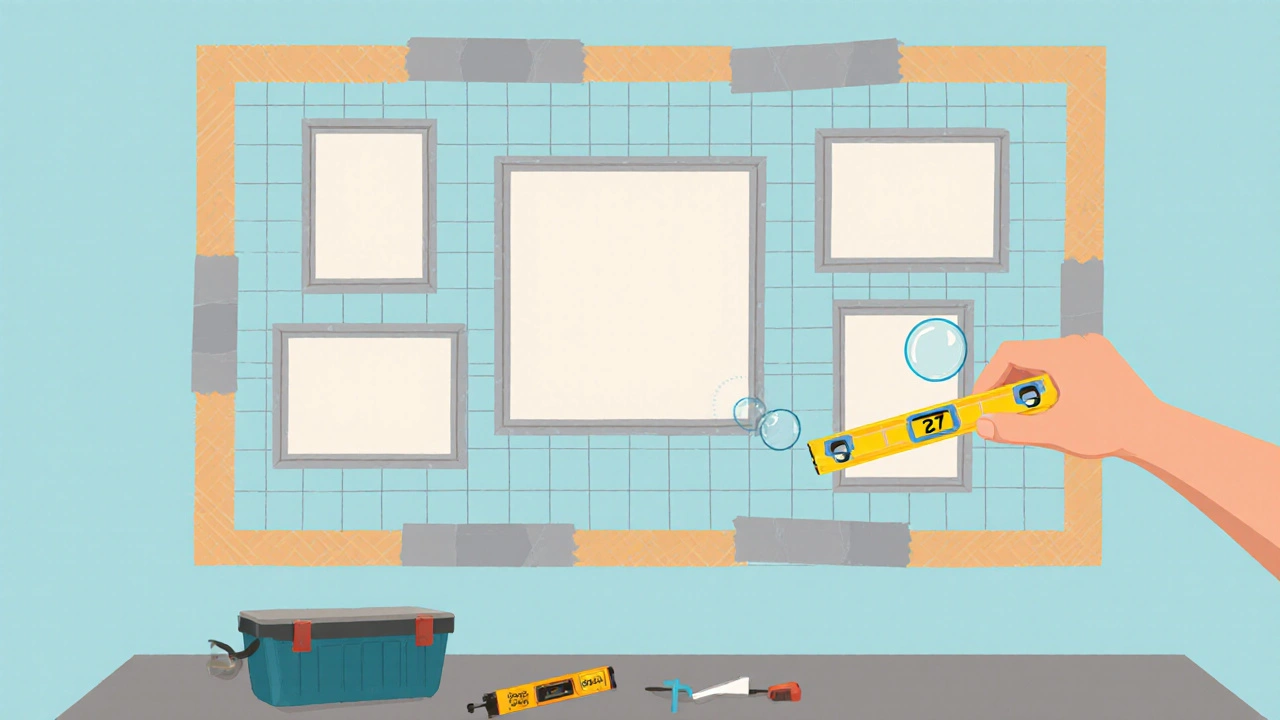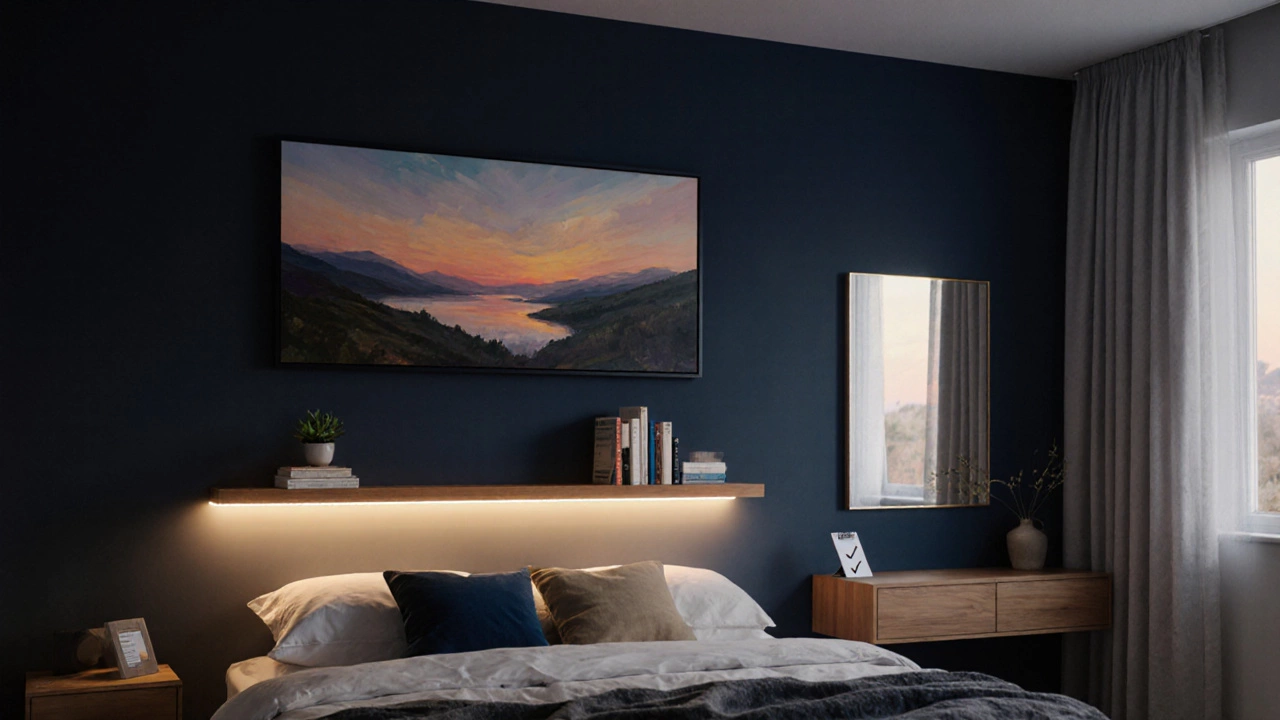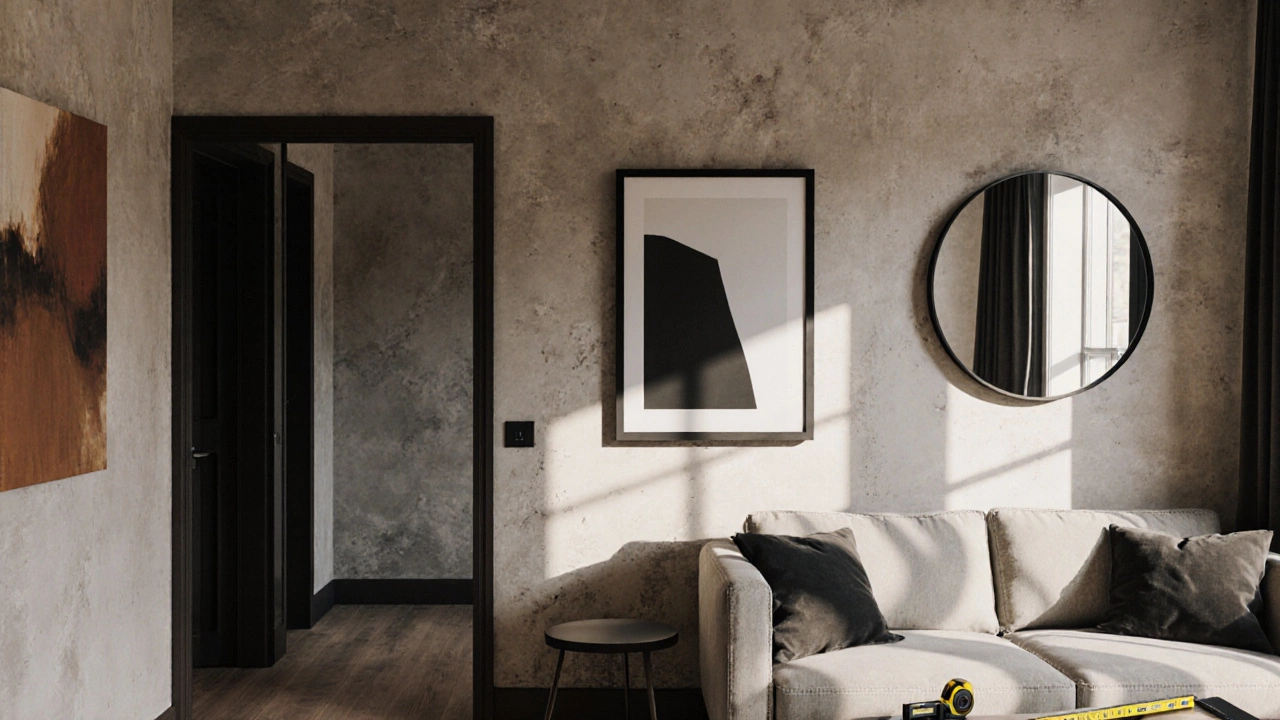Wall Decor Hanging Height Calculator
Calculate Ideal Hanging Height
Enter furniture height to see recommended hanging height
The center of your artwork should sit at 57-60 inches from the floor for most adults. This calculator adjusts for your furniture height.
When it comes to giving a room personality, Wall decor is a collection of paintings, prints, mirrors, shelves, and other visual elements that transform blank walls into focal points. Knowing the wall decor rules helps you avoid awkward gaps, mismatched scales, and wasted money. Below you’ll find a step‑by‑step playbook that covers everything from picking the right pieces to nailing (or not nailing) them up.
Understanding the Basics of Wall Decor Rules
Before you start drilling, ask yourself three simple questions: What mood do I want to create? Which wall gets the most traffic? How much weight can the surface handle? Answering these frames the entire project.
- Mood: Warm colors and organic shapes promote coziness; black‑and‑white photography leans toward modern minimalism.
- Traffic: Entryways need low‑profile pieces that won’t get knocked off; living‑room walls can carry larger statements.
- Weight: Drywall anchors hold up to 10 lb per screw, while brick can sustain 20 lb or more with the right anchor.
Choosing the Right Pieces for Your Space
Not every artwork belongs on every wall. Here’s how to match pieces to rooms:
- Gallery wall works well in living rooms and hallways where a cluster of smaller frames creates visual interest.
- Large‑scale paintings or photographs belong above sofas or beds, anchoring the room’s primary seating.
- Mirrors (Mirrors) reflect light and make narrow spaces feel bigger.
- Floating shelves (Floating shelf) double as display and storage for books or small plants.
Measuring and Planning Layouts
Accurate measurements prevent the dreaded “too high” or “too low” scenario. Follow this quick plan:
- Mark the wall’s midpoint using a pencil and level.
- Determine the total width of your intended arrangement. For a Gallery wall, add the width of each frame plus 2‑3 inches of breathing room.
- Use painter’s tape to outline the shape on the wall. Step back and adjust until it feels balanced.
When hanging a single piece, aim for the artwork’s center to sit at eye level-about 57-60 inches from the floor for most adults.

Hanging Techniques and Tools
Choosing the right hardware is a core part of the wall decor rules. Below is a quick comparison of the most common methods.
| Method | Weight Capacity | Surface Damage | Cost | Ease of Use |
|---|---|---|---|---|
| Nails & Screws | Up to 20 lb per point | Permanent holes | Low | Moderate |
| Picture Hanging System | 10‑50 lb (depending on rail) | Minimal (rail anchored) | Medium‑High | Easy after installation |
| Command Strip | Up to 5 lb per strip | No damage (removable) | Low | Very easy |
| Adhesive Hooks | Up to 3 lb | Minor (small puncture) | Low | Easy |
For heavy pieces like large canvases, a Picture hanging system offers the best blend of security and flexibility. Small, lightweight prints can often live happily on Command strips, especially if you rent.
Balancing Scale, Proportion, and Color
Even the prettiest frame will look off if it doesn’t respect the wall’s dimensions. Use these heuristics:
- Scale: A piece should be roughly two‑thirds the width of the furniture it sits above.
- Proportion: Group odd‑numbered frames (3, 5, 7) for a natural flow; avoid even numbers unless you’re creating symmetry.
- Color: Pull a dominant hue from the artwork and echo it in nearby accessories-cushions, rugs, or lamps.
When integrating a Wall mural, limit the color palette to three shades to keep the room from feeling chaotic.

Special Cases: Mirrors, Shelves, and Murals
Each type of wall decor brings its own set of rules.
- Mirrors: Hang them opposite windows to bounce light deeper into the room. Secure large mirrors with two mounting points at least 12 inches apart.
- Shelves: Use a stud finder for loads over 10 lb. Distribute weight evenly across the shelf length to avoid sagging.
- Murals: Prepare the wall with a primer, then apply the mural in sections, smoothing out bubbles as you go.
Common Mistakes to Avoid
Even seasoned DIYers slip up. Spot the red flags before they happen:
- Hanging too high-always double‑check eye level.
- Ignoring the wall’s material-drywall, brick, and plaster each need different anchors.
- Overcrowding-leave at least 2-3 inches between pieces unless you’re deliberately creating a dense collage.
- Neglecting lighting-add picture lights or directional spotlights to showcase texture.
Quick Checklist for Successful Wall Decor
- ✔ Define the mood and purpose of the space.
- ✔ Measure wall height, width, and locate studs.
- ✔ Choose pieces that suit the room’s scale.
- ✔ Sketch layout with tape before drilling.
- ✔ Select appropriate hanging hardware based on weight.
- ✔ Level every piece; use a laser level for large installations.
- ✔ Add lighting to enhance visual impact.
- ✔ Step back, adjust, and enjoy the new look.
How high should I hang a picture?
The center of the artwork should sit around 57-60 inches from the floor, which aligns with average eye level for most adults.
Can I use Command strips for heavy frames?
Command strips are rated up to 5 lb per strip. For anything heavier, opt for nails, screws, or a picture hanging system to avoid accidental falls.
What’s the best layout for a gallery wall?
Start with the largest frame at the center, then arrange smaller pieces around it, maintaining equal spacing (2-3 inches). Odd numbers (3,5,7) create a natural flow.
Do I need a stud finder for hanging mirrors?
For mirrors over 10 lb, locate studs or use heavy‑duty anchors. Small decorative mirrors can be mounted with adhesive hooks.
How do I avoid visible nail holes?
Use removable mounting products like Command strips for light pieces, or fill nail holes with spackle and touch up with paint after the project is complete.
